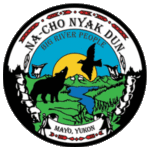Heritage
What NND is trying to preserve is a way of life, rather than a singular item such as language or site. All aspects of the old way of life are interdependent, and none can survive alone. We can’t use language only in the classroom and preserving a single building in a village seems pointless. The Language and the Traditional Knowledge, the sites and buildings and artefacts all mean something when seen as an entire way of life and the Heritage department should preserve with their interdependent nature in mind.
Citizens are often hired to assist with various projects, whether to provide background information about a specific place, provide translation services or be a boat driver. The Heritage & Culture Department strives to involve as many citizens as possible in all aspects of its work.
Oral Histories and Traditional Knowledge
NND staff have been working for many years to document oral histories and traditional for various purposes including land claims, place name documentation, Peel Watershed Land Use Planning process, Ddhaw Ghro Habitat Protection area, Devil’s Elbow Habitat Protection Area and other projects as required. This information exists in various forms in our collection, and our staff is working closely with Lands Department staff to ensure that this information is documented and used according to our Traditional Knowledge Guidelines (Spring 2008). We continue to use this information for our purposes as well to contribute to other processes such as applications through YESAB, collaborative research and other partnerships.
For more information about any of our projects and activities, please contact us at 867 996-2265 or heritagemgr@nndfn.com.
Language Resources
Visit nndfn.com/language
